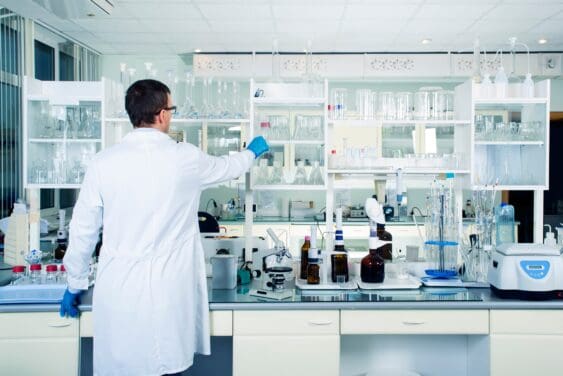The Role of Laboratory Design in Scientific Achievement
The foundation of successful scientific research extends beyond advanced equipment and skilled personnel—it includes the thoughtful design of the laboratory environment itself. At Laboratory Movers, our experience relocating countless research facilities has provided unique insights into how laboratory design directly impacts research outcomes, staff productivity, and operational efficiency.
Strategic Planning for Optimal Laboratory Environments
Comprehensive Space Assessment
Before finalizing any laboratory design, a thorough evaluation of space requirements is essential. This assessment should account for:
- Current and projected personnel numbers
- Equipment footprints and clearance requirements
- Workflow patterns between workstations
- Storage needs for consumables and specimens
- Support spaces for administrative functions
An effective laboratory layout balances these elements to create an environment where researchers can work efficiently without space constraints or workflow bottlenecks.
User-Centered Design Approach
The most successful laboratory designs emerge from direct collaboration with the scientists and technicians who will use the space daily. This collaborative approach ensures that:
- Workstations are configured for specific research protocols
- Equipment placement supports natural workflow progression
- Storage solutions address actual usage patterns
- Specialized needs for particular research applications are accommodated
By involving end-users in the design process, Laboratory Movers helps create environments specifically tailored to support the unique research being conducted.
Optimizing Workflow Through Strategic Layout
Functional Zones and Traffic Patterns
Effective laboratory design incorporates distinct functional zones that minimize unnecessary movement while maximizing productivity:
- Designated areas for sample preparation
- Separate spaces for analytical procedures
- Isolated environments for sensitive equipment
- Buffer zones between incompatible activities
- Clear pathways to emergency exits and safety equipment
These intentional traffic patterns reduce cross-contamination risks while enhancing research efficiency and safety.
Ergonomic Considerations
Researcher comfort directly impacts both productivity and accuracy. Laboratory Movers recommends incorporating these ergonomic elements:
- Adjustable-height workbenches to accommodate different users
- Appropriate bench depths for comfortable equipment access
- Strategic placement of utilities and service connections
- Adequate clearance around instruments and equipment
- Proper lighting designed to reduce eye strain
These elements combine to create a comfortable working environment that supports extended periods of focused work.
Designing for Adaptability
Flexible Infrastructure
Research priorities evolve rapidly, and laboratory spaces must adapt accordingly. Forward-thinking design incorporates:
- Modular furniture systems that can be reconfigured
- Universal connection points for services and utilities
- Mobile equipment platforms for easy relocation
- Adaptable storage solutions that grow with changing needs
- Expandable spaces that accommodate future equipment
This built-in flexibility extends the useful life of laboratory spaces and reduces costly renovations as research directions change.
Safety and Accessibility as Design Priorities
Inclusive Laboratory Environments
Modern laboratory design must prioritize accessibility for all researchers:
- Adequate clearance for wheelchair navigation
- Height-adjustable workstations
- Accessible emergency equipment
- Clear sightlines throughout the space
- Controls and interfaces at appropriate heights
These design elements ensure that laboratories are welcoming and functional environments for all researchers.
Integrated Safety Systems
Safety considerations should be fundamental to laboratory design rather than afterthoughts:
- Proper ventilation systems sized for the space
- Appropriate placement of emergency equipment
- Clear evacuation routes
- Segregated storage for incompatible materials
- Visibility across work areas for supervision
These integrated safety elements protect both personnel and valuable research.
Laboratory Design’s Impact on Research Outcomes
The thoughtful design of laboratory spaces directly influences research quality and productivity. Well-designed laboratories:
- Reduce time spent on non-research activities
- Minimize errors through logical workflow design
- Enhance collaboration through appropriate shared spaces
- Support researcher wellbeing through comfortable environments
- Enable seamless adaptation to evolving research needs
Expert Laboratory Design Support from Laboratory Movers
Laboratory Movers brings extensive experience in laboratory design, layout, and relocation to every project. Our comprehensive approach includes:
- Initial needs assessment and space planning
- Collaborative design development with research staff
- Careful coordination of laboratory transitions
- Specialized moving services for sensitive equipment
- Post-move optimization and arrangement
Contact Laboratory Movers today to discuss how our expertise in laboratory design and relocation can support your research organization’s goals and enhance your scientific outcomes.
